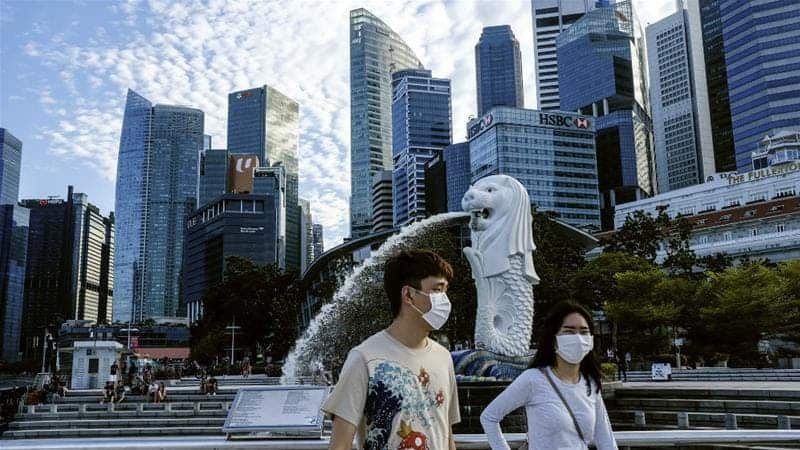They did almost everything right and were praised for it even by the World Health Organization (WHO), highlighting their approach to controlling the coronavirus outbreak. But they might have let their guard down far too soon.

Singapore and Japan are now struggling to control the outbreak as new waves of infections hit the two countries, suggesting it might be difficult for the United States, Europe and the rest of the world to return to the way things were anytime soon.
Singapore struggles
Officials in Singapore recorded today a new daily record of more than 1,400 additional cases. The number of COVID-19 cases has increased more than two and a half times in the last week, with more than 8,000 in total.
The surge has been linked to the government overlooking the living conditions of most foreign workers, living in crowded dormitories with between 12 and 20 men sharing the same single room. About three-quarters of all cases are linked to the dormitories, according to official figures.
Last month the campaign group Transient Workers Count Too (TWC2) urged officials to make plans to protect workers, warning: “The risk of a new cluster among this group remains undeniable.” Now, with new additional cases, the government is considering further actions.
Prime Minister Lee Hsien Loong wrote on Facebook that it will take time to break the chain of transmission in the dorms, claiming most of the cases among migrant workers were mild. Nevertheless, he said the government is building up its health care and isolation facilities.
Officials have already isolated nine dormitories, the largest one holding 24,000 men, while all the rest of the buildings were placed under an effective lockdown. Nevertheless, as only essential workers can leave, the restrictions left the dormitories more crowded than usual.
In an interview with The Guardian, New Zealand professor Mohan Dutta, who has interviewed 45 migrant workers in Singapore since the outbreak began, said many feared an outbreak was inevitable due to the conditions. “They don’t have access to soap and adequate cleaning supplies,” he said.
Japan let its guard down too soon
Meanwhile, in Japan, the country is also struggling with a surge of coronavirus infections after an exemplary initial containment. Many hospitals in Japan are already working over capacity, being forced to turn some sick people amid a shortage of staff and equipment. In a striking recent case, an ambulance carrying a man with a fever was rejected by 80 hospitals until he found finally found one.
The “collapse of emergency medicine” has already happened, a precursor to the overall collapse of medicine, the Japanese Association for Acute Medicine and the Japanese Society for Emergency Medicine said in a joint statement. Hospitals are under an excessive burden, they added.
In March alone, there were 931 cases of ambulances getting rejected by more than five hospitals or driving around for 20 minutes or longer to reach an emergency room, up from 700 the same month last year, according to Tokyo’s Fire Department.
Japan appeared to have controlled the outbreak at first, targeting clusters of infections at closed spaces such as meeting venues and clubs. Nevertheless, the spread of the virus was faster than expected and brought to light the underlying problems of medical care in Japan. A lockdown was only recently imposed, though people are instructed rather than forced to stay home.
Following the decision to postpone the Olympics to 2021 in late March, Tokyo has seen a spike of COVID-19 cases, with the current rate at 2,595. Most people are currently hospitalized, threatening the hospitals’ treatment capacity and health workers – now demanding the government for sufficient protective gear.
“From the medical field, we are hearing cries of desperation that lives that can be saved may no longer be possible,” Prime Minister Shinzo Abe said Friday. “I ask you all again, please refrain from going out.”






